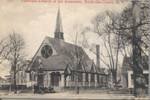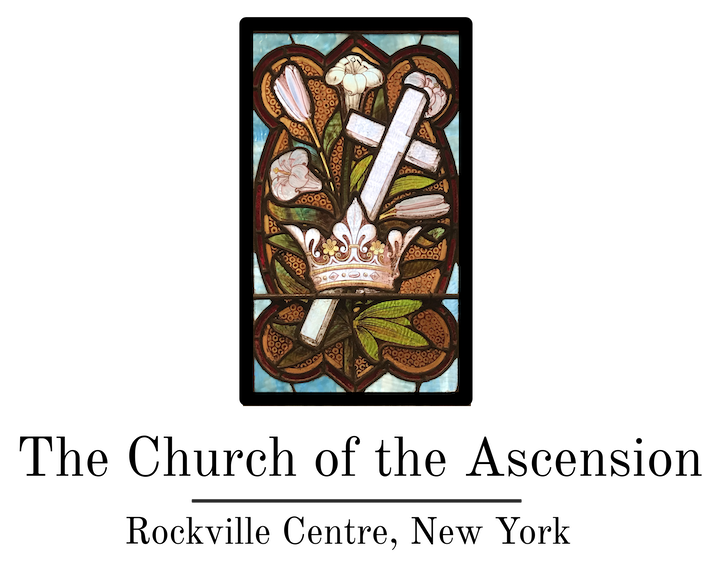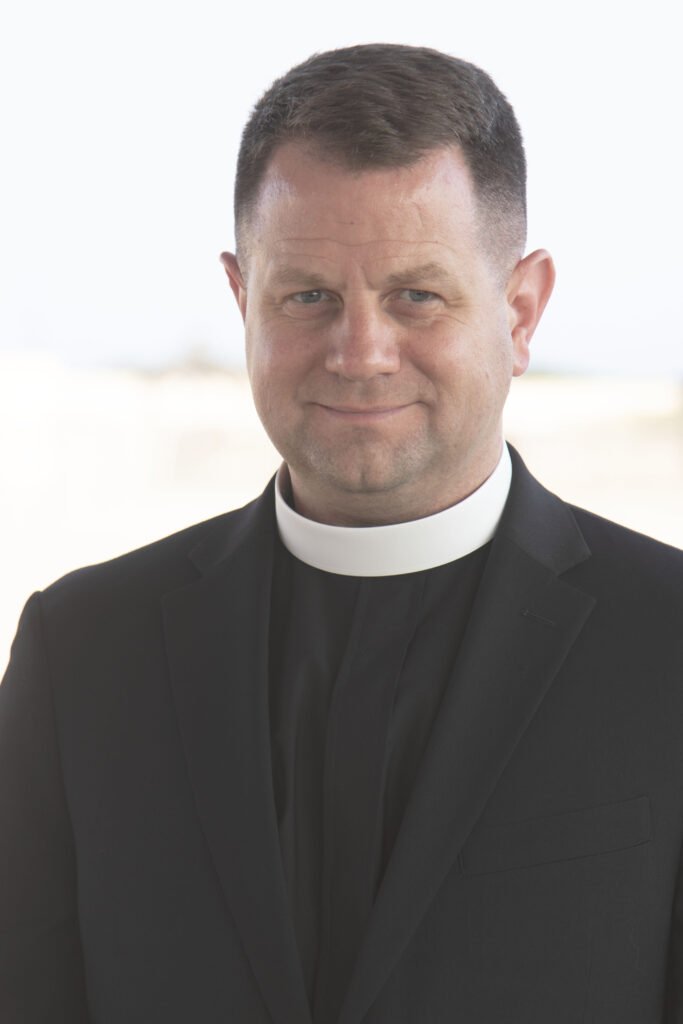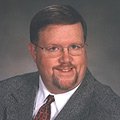Welcome to Ascension
About us
-

Who We Are
Learn more about our community and the church that we call home.
-

What We Believe
How our faith in the Resurrection of Jesus Christ changes everything.
-

A Brief History Of Our Parish
Founded in 1885. Parish built in 1888 and expanded in 1941. Learn more about our history here!
-

What To Expect
A little introduction to what our services are like.
-

Joining Our Parish
We would love for you to join our community and make this your spiritual home. It might be easier than you think.
-

Open Baptism
If you have never been baptized we are happy to arrange a baptism for you. Learn more here.
-

Weddings
Our policies regarding weddings may be found here. Please read these before contacting us.
-
Funerals
Funeral policies and guidelines for planning services in advance.
FAQs
-
Low Mass is a simple spoken service of the Holy Eucharist or Holy Communion. Low Mass usually lasts about 35-40 minutes.
High Mass is a sung Holy Eucharist with a full choir and more ceremonial. Incense is often used at High Mass. The service lasts slightly over an hour.
-
The Church of The Ascension has a small lot immediately behind our parish hall. If this lot is full there are several public lots nearby and street parking is readily available. Our church sits very close to the Rockville Centre station of the Long Island Railroad.
-
We are a part of Christ’s One, Holy, Catholic, and Apostolic Church, but we are not Roman Catholic. The Episcopal Church is a part of the larger Anglican Communion, a group of churches that trace their lineage through the Church of England (Ecclesia Anglicana in Latin). During the sixteenth century, the Church of England famously separated itself from the authority of the Bishop of Rome (the Pope). While doing so, it still maintained the historic faith as proclaimed in the creeds and the church fathers, and it maintained bishops in what is known as Apostolic Succession, meaning that the bishops had been consecrated in an unbroken line all the way back to the Apostles. The church did, however, implement many Protestant reforms and thus some in the Episcopal Church identify as Protestant, while others identify as Catholic, yet we are one church. During the mid-1800s a movement known as the “Oxford Movement” began, which encouraged Anglican Churches to reclaim and nourish parts of the catholic tradition and worship that had been largely neglected during the preceding centuries. Anglican churches that place a strong emphasis on their role as a part of Christ’s One, Holy, Catholic, and Apostolic Church and that have a strong value of catholic tradition, are often called “Anglo-Catholic.”
-
Any baptized Christian (i.e., anyone that was baptized with water “in the Name of the Father, and of the Son and of the Holy Spirit”) is welcomed to receive communion in our church.
-
When we gather for worship, we come together to show respect and adoration for God, and we do so with both our bodies and our minds. Much of the formality of our service stems from our desire to give our best to God and to show God our utmost respect. The Church’s liturgy is not the product of one generation but has been shaped through the centuries, and thus our worship services frequently have a formality that is otherwise absent in our everyday life, but this can be a very good thing: We are reminded through the ritual and the tradition that this is holy ground we are standing on, and that the God we are worshiping is not the God of today or tomorrow, but the God of all eternity.
-
If you have never worshiped in an Episcopal or in a Catholic church before, one of the first things that you will notice is that we move around a lot. We stand for the entrance of the choir and other ministers, we stand for the gospel reading, we sit for the sermon, and we stand or kneel during the prayers at the altar. In general, our posture is meant to reflect something greater: we stand to show respect, we kneel to show humility, and we sit to receive instruction. At various times members of the congregation may bless themselves with the sign of the cross. You don’t need to worry about understanding or remembering all the gestures; participate in the service at your own comfort level. If you have mobility issues or difficulty standing, please feel free to remain seated.
-
Being a part of Christ’s One, Holy, Catholic, and Apostolic Church, the Episcopal Church has much in common with the Roman Catholic Church (and likewise with the Orthodox Churches). We have the same creeds and scriptures, the same sacraments, the same three orders of ordained ministry (bishops, priests and deacons) and many of the same traditions. There are, however, a few notable differences:
The Pope– Since the sixteenth century, the Bishop of Rome (the Pope) does not have direct authority over Anglican churches, nor do churches in the Anglican Communion hold to the doctrine of Papal Infallibility. The head of the Anglican Communion is the Archbishop of Canterbury; however, the bishop in this role is regarded as a “first among equals” and does not have the same direct authority or power that the Pope has within the Roman Catholic Church.
Married and Female Clergy- One of the big changes that did occur at the time of the Reformation was that the Church of England began allowing its priests to marry. Since then married priests have become the norm for our church. Over the past half-century, many Anglican churches (including the Episcopal Church) began ordaining women, and now we have women exercising leadership in all levels of ordained ministry.
Human Sexuality– In the Episcopal Church it is not uncommon to find differences of opinion on many theological issues, including issues of human sexuality; however, as a national church we have taken very pro-active stances on LGBT rights, including allowing for same-sex marriages within our churches. The Episcopal Church will also remarry divorced persons.
-
Yes. As a matter of fact, we spend more time reading scripture every Sunday than many more Protestant denominations. The reason is that almost every mass has an Old Testament reading, a Psalm, a New Testament reading, and a reading from one of the four Gospels. Most of the time the readings are printed in the service bulletin, so it is not necessary to bring a Bible with you. In ancient times, most churches would have had only one Bible, which would have been read aloud during the service. Today the scripture reading still forms an important part of our weekly worship. The Church has a calendar, called a lectionary, which directs which readings are to be read each week. Over the course of three years, someone attending church on a weekly basis will be exposed to the vast majority of the Bible. For us this is very important, because the lectionary forces the Church to read through all of the scriptures, rather than just focus on those that the priest or minister likes best. We also strongly encourage individuals to regularly study the scriptures and read them in their daily devotions.
-
The Church of The Ascension uses traditional language in almost all of its worship services. In our modern prayer book this is known as Rite I. Many of the prayers in the Book of Common Prayer were either written or translated from Latin in the late sixteenth century at the time of the English Reformation. This was also the time of such literary giants as William Shakespeare, Christopher Marlowe, and Edmund Spenser. The Book of Common Prayer, and afterwards the Authorized (or King James) Version of the Bible, contain some of the most beautiful writings in the English language and have themselves contributed more to our language than any other books printed. We maintain traditional language here at Ascension, because we feel it lends a dignity and beauty to our worship; it takes us out of our modern mindset and reminds us that we were not the first Christians to worship God using these prayers, nor will we be the last.
-
At The Church of The Ascension, when the priest is addressing the people (e.g., during the sermon), he actually does face the people, but when the priest is leading the congregation in prayer to God, he turns so that everyone is facing the same direction together. This is actually a very ancient practice and would be very familiar to almost anyone that attended an Episcopal or Roman Catholic church prior to the 1960s. The ancient Israelites believed that the Messiah would come from the East, and after his death, Resurrection and Ascension, the early Christians believed that Jesus Christ would return from the East, just as the rising sun returns every morning. Traditionally most churches were built with their high altar on the East end of the building, just as ours is at Ascension. This means that when we pray to God, we do so as one body of worshipers that are eagerly looking to the coming of the Lord. There is not a division between priest and people, but rather priest and people approaching God as one.
-
Incense is first and foremost burned as an offering to God. It is one of the most ancient practices that pre-dates Christianity itself. We know from the Bible and from archeological evidence that the ancient Hebrews burned incense in their worship of God, and it has been a practice carried on by Christians throughout the ages. Symbolically, the incense reminds us of how our prayers ascend to God and in practical terms the smell of incense helps us to engage all of our senses in the worship of God. Incense is regularly used at The Church of The Ascension, particularly on major feast days.
-
There are some prayers within the mass that remain the same from week to week. From very early times these prayers have been set to music and sung by the faithful gathered to worship. Some of the most beautiful music in the history of the world was written to support the worship of God, and almost all pre-modern composers of any significance have applied their talents to setting these texts to music. At The Church of The Ascension, there are times when these prayers are sung by the entire congregation and there are times when they are sung by the choir alone; in both cases, the prayers are meant to be the prayers of the entire church, and not just those actively singing. Some settings require greater skill and talent to sing than others, and thus, are better suited to choirs. The mass is not, however, a choir performance. The role of the choir is not to entertain us, but rather to assist us in lifting up our own prayers to God.
-
Episcopalians pray in many different ways. When we gather together for our regular services we use the Book of Common Prayer, which contains the different services of the church that have been handed down through the ages. By using prayers that are centuries old we are connected to Christians throughout time and our personal faith is deepened. Reciting prayers from the prayer book is not meant to be done mindlessly though, but rather reverently and with thought to what is being said. Over time these prayers often become a foundational part of our prayer lives, in much the same way that the Lord’s Prayer is for almost all Christians. Our prayers do not end with the prayer book though. Episcopalians are encouraged to pray privately in many different ways: offering to God private petitions or concerns, meditating in silence, saying the Daily Office or the rosary, or reading the Psalms.
-
Unfortunately, due to the limited space and staff we have here at The Church of The Ascension, we are unable to rent our parish hall to outside groups.
Clergy, Staff, and Lay Leadership
-
rector@ascensionrvc.org
The Very Reverend Kevin L Morris, DMin. is the Ninth Rector of The Church of The Ascension and Dean of the Southwest Nassau Deanery in the Episcopal Diocese of Long Island.
Father Kevin was elected rector of Ascension in the Summer of 2012. Just prior to receiving the call from us, he was Director of Pastoral Care, Patient Relations and Volunteer Services at an acute care hospital affiliated with the Diocese of Newark, New Jersey.
At the same time, he was also serving as a long-term supply priest at Christ Church in Harrison, New Jersey. His responsibilities have included a great deal of involvement in administrative and pastoral care duties and he has worked in both small and large parishes. Father Kevin served for three years as Staff Chaplain in a Florida Hospice where he provided spiritual care to terminally ill patients and their families. He was ordained deacon at Trinity Cathedral in Miami, Florida and ordained priest at The Church of The Resurrection, New York New York, both in 2004.
He received a B.A. from the University of Miami where he graduated Magna Cum Laude with a double major in English Literature and History and spent a summer studying at Oxford University, UK. He completed studies for his MDiv. at Yale. In 2022, Father Kevin received a DMin. in Preaching from the University of the South.
Father Kevin enjoys traveling, is an excellent writer, and loves cooking. In May of 2016, Father Kevin was married to Father Keith Voets, an Episcopal priest and the Rector of Saint Alban the Martyr in Queens. In June of 2022, he and Father Keith welcomed their son, Robert David (Robbie) into the world.
-
rev.matthew.sanfilippo@gmail.com
Father Matt was born in New York City in 1978. The youngest of three children, he was raised in the Roman Catholic tradition, and graduated from Holy Trinity Diocesan High School in 1996. At an early age, he felt a calling to public service and healthcare. Shortly after graduating high school, he began his career as a Paramedic with the Fire Department of New York. After 12 years of working as a Paramedic, he changed careers to law enforcement and became a Police Officer with the New York City Police Department.
He began to discern his calling to ordained ministry when he was 33 years old. Over time, he discerned that calling to be a pastor and chaplain to first responders and the military. After 20 years of combined service as a first responder, he retired from the NYPD and matriculated at the Seminary of the Southwest, with a concentration in Military Chaplaincy. He was ordained a deacon in October 2021, and a priest in April 2022. he also completed two units of Clinical Pastoral Education before graduating seminary in May 2022 with a Master of Divinity.
-
mr.k.dyer@gmail.com
Ken has more than 25 years experience as a church organist and musician, all of which is reflected in his creation of an Ascension Choir repertoire which reflects that group’s professionalism, from Bach to spirituals and 20th century choral works. Mr. Dyer is himself a composer and arranger of music, and his own works may from time to time be heard at Ascension Church. We are graced by his expertise in music and liturgy; Mr. Dyer holds a B.A. in Theology from St. John’s University , a B.A. in Music Education from Queens College CUNY and an M.A. in Urban and Multicultural Education from the College of Mount St. Vincent.
-
parishadmin@ascensionrvc.org
Questions about announcements for the bulletin, flower memorial donations, letters of transfer and parish records should be directed to Margaret. Regular office hours are Mondays and Wednesdays from 8am to 2pm.






